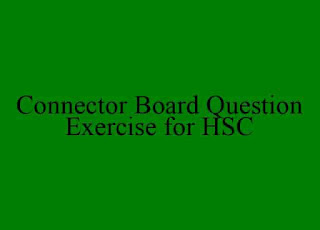The Use of Symbolism in the Poetry of Dylan Thomas
Dylan Thomas attached great importance to the use of symbolism in his poetry. Let's talk about Dylan Thomas Symbolism in his famous poems.
Symbolism in ‘After the Funeral’
After the Funeral to employs a number of symbols. ‘Dry leaves’, for instance, symbolize the pages on which Thomas will write a poem to express his grief over the death of his maternal aunt. The ‘parched woods of Wales’ symbolize places and people devoid of the kindness and sympathy which the dead woman bad in real abundance.
The four crossing birds are a very powerful Biblical symbol. The criss-cross movements with which the four birds, probably doves, make the four pointed sign of the cross are a formal benediction or blessing over the dead woman. (The sign of the cross is holy for Christians). Then the fox and the fern in this poem are also important symbols. They represent Thomas all the more important aspects of his aunt's best room. Those family objects are precious through emotional association though they are of no practical use.
That is why the bringing to life of the fern and the fox at the end of the poem is actually so moving. In the two closing lines, the poet means to say that even the dead fox will twitch and cry ‘love’ because this emotion has not been lost but is only dormant. It symbolizes all the love of the best room of the dead woman's house come to life, come back to the life that it once had in abundance.
Symbolism in ‘Poem in October’
Although Poem in October is written in a more or less straightforward style, symbols are to be found even here. The heron in this poem becomes a symbol of sacredness and is regarded as a priest sitting on the seashore. The white horses symbolize to Thomas something highly desirable.
The ‘tall tales’ symbolize imagination and fancy. Another example of symbolism the phrase, ‘the other air’, symbolizes the vision and memory of childhood. The woods become the ‘green chapels’. The exquisite delights of childhood are described as the ‘mystery singing alive still in the water and 'singing birds’.
Symbolism in Fern Hill
Fern Hill is among the most straightforward and simply written of Thomas's poems. Here, therefore, we come across very few Symbols. ‘Adam and maiden’ symbolize the wonderful state of innocent childhood or boyhood. The expression ‘lamb white days’ also symbolizes innocence and purity, and freedom from all wickedness and vice. The closing two lines symbolize the anxieties and the responsibilities which maturity brings with it and which chain the growing boy.
Apart from these and one or two other pictures of this kind, the poem does not make much use of symbolism, and that is one of the reasons for its widespread appeal and popularity. Symbolism certainly enriches a poem, but the ordinary reader prefers a straightforward manner of writing.
Symbolism in A Refusal to Mourn
A Refusal to Mourn makes use of some important symbols. ‘Zion of the water bead’ is an expression which symbolically means one of the primal elements to which all human beings return at the end. Likewise, the ‘synagogue of the ear of corn’ is also a symbolic primal element of the same kind. ‘Zion’ and ‘synagogue’ are sacramental images intended to give a sacramental meaning to the statemen.
The phrase ‘stations of the breath’ is another symbolic express on which recalls the Biblical phrase ‘stations of the Cross’. The ‘long friends’ symbolize worms which represent death or the grave and therefore corruption. But the Worms are also symbolic of reunification and eternity.
Symbolism in ‘Lament’
The poem called Lament contains plenty of symbolism which is sexual in its content. The ‘old ramrod’ is a symbolic phrase which suggests the male sex organ so that the old man who is speaking in the poem appears to us as a personification of the phallus.
Other symbolic phrases of a similar kind are ‘the wick- dioping moon’. ‘spring-tailed tom’, ‘hickory bull’, ‘a black sheep with a crumpled horn’, ‘the limp time’, and ‘a blind slashed eye’. The use of the word ‘shoved’ also has sexual implications.
Symbolism in ‘The Force That Through the Green Fuse’
Dylan Thomas, many major poems would show how symbolism functions in his work. The Force That Through the Green Fuse poem the word ‘flower' in the very first line serves as a symbol for Nature in general. Dylan Thomas identifies the human body with the physical universe, and in doing so Thomas makes use of many symbols in this poem.
‘Wax’ in this poem is used as a symbol for dead flesh. ‘Quicksand’ is employed here, as a symbol of a destructive aspect of Nature. The phrase ‘shroud sail’ suggests both death and life. ‘Sail’ represents movement or life, while the shroud is the winding-sheet in which a dead body is wrapped up.
The ‘mountain spring’ and the ‘fountain head’ are both symbols of life and nourishment. The ‘fountainhead’ symbolizes the womb which is the source of life. The line ‘How time has ticked a heaven round the stars’ is a symbolic way of saying that, under the pressure of Time, man has invented eternity.
Symbolism in ‘Light Breaks Where No Sun Shines’
In the poem, Light Breaks Where No Sun Shines, we have a series of symbolic images. The waters of the heart and their tides symbolize the human blood and its circulation. ‘Broken ghosts with glow-worms in their beads’ symbolize the intimations of consciousness or foreknowledge as they present themselves to the child in the womb. In the second stanza, we have a striking example of sexual symbolism.
A candle in the thighs symbolizes the male sex organ or the penis. The words ‘where no wax is’ symbolically mean ‘where there is no flesh or vitality.’ (Here wax symbolizes vitality, and this contradicts wax as a symbol of deadness in the preceding poem). The whole of the second stanza offers, in symbolic terms, a contrast between the state of being young and the state of being old, between virility and impotence.
In the third stanza ‘the gushers of the sky’, the‘rod’, the ‘oil’ are all used in symbolic senses. The image of a gusher spouting to a divining rod lends itself to a sexual interpretation. The gushers of the sky may be equated simply with the processes of Nature, and the idea is that life goes on mingled with joy and sadness. The use of symbols becomes even more complex and therefore difficult to understand, in the next two stanzas. The elusiveness of Thomas's symbolism is an important factor in the obscurity of his poetry.
Symbolism in ‘When the October Wind’
There are a number of symbolic phrases and images in the poem, Especially When the October Wind. One of the themes in this poem is that of mutability and decay, and so we get symbolic pictures of disintegration and death. The crabbing sun, a shadow crab, the raven coughiag in winter sticks, the wormy winter, the spider, the coming fury, the dark-vowelled birds-all these phrases, each of them a picture, serve a symbolic purpose. This symbolic imagery deepens the gloom of the poem which is further increased by the other theme which is the inadequacy of language fully to express human experience.



